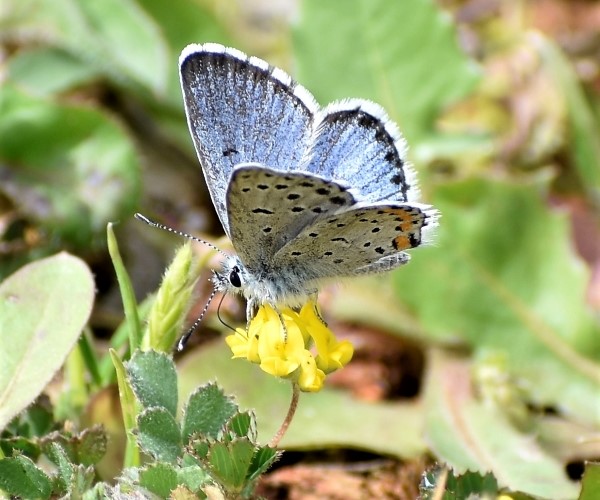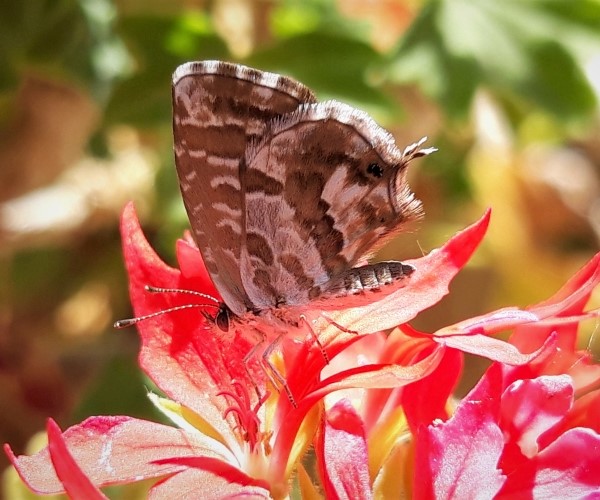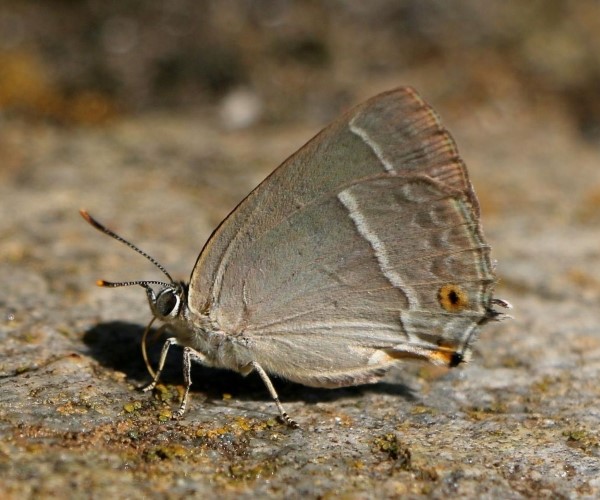
Pseudophilotes vicrama, Crete - photo © Ch. Almpantakis
Pseudophilotes vicrama
BUTTERFLY INFO
Pseudophilotes vicrama is a butterfly of the family Lycaenidae on the island of Crete, Greece.
Scientific name
Pseudophilotes vicrama (Moore, 1865)
Common name
Eastern Baton Blue
Classification
Family: Lycaenidae > Subfamily: Polyommatinae > Tribus: Polyommatini > Genus: Pseudophilotes
Wingspan
Male to female: 20-25 mm
Appearance
The male butterfly is blue with a broad border, while the female is brown. Both sexes have white fringes, with dark brown marks at veins.
In particular, the upper side of the forewing of the male is blue with small black markings at the end of the cell.
The underside is grey with black marks forming a nearly straight row in the submarginal area, a curved one in the postdiscal area, and there are also two marks in the cell.
Both sides of the hindwing are respectively similar to the forewing’s; there are just additional orange marks in the submarginal area.
Behavior
It flies rapidly low to the ground.
Habitat
Pseudophilotes vicrama in Crete live in fields, mountains in dense shrubland, seaside, nutrient-poor grasslands, sandy areas, and phrygana.
Food plant
The larva feeds on Labiatae, i.e. Thymbra capitata.
Flight period
The butterflies fly in 2 generations per year.
| Jan | Feb | Mar | Apr | May | Jun | Jul | Aug | Sep | Oct | Nov | Dec |
Remarks
The butterfly is easily distinguished from Polyommatus icarus because both sexes of Pseudophilotes vicrama, have white fringes, with dark brown marks at veins, more distinctive and large markings, and are smaller in size.
Status*
Least Concern (LC)
Pseudophilotes vicrama Distribution Map

*based on http://www.pamperis.gr/THE_BUTTERFLIES_OF_GREECE/MAPS.html, updated Dec 2025 (ETRS89, grid 10X10 km)


































